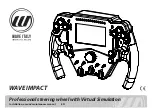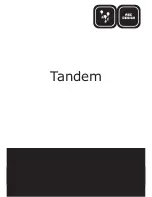3 - 39
IP
N 07
4-
50
5-
P1
E
IC6 Operating Manual
3.6.3 Auto-Z
The Auto-Z feature of the IC6 automatically determines the Z-Ratio of a crystal.
This feature is enabled on the SENSOR page of the SENSOR screen. For the
theory behind Auto-Z, see
section 16.1.6, Auto-Z Theory, on page 16-9
The following information briefly describes Auto-Z and details the conditions under
which a crystal is "unable to Auto-Z".
Auto-Z is calculated based on the slightly different mass sensitivities of the
fundamental and the first anharmonic resonances of the quartz crystal oscillator.
Therefore, the need to measure the frequencies of both the fundamental and the
first anharmonic resonances is critical.
When inserting a monitor crystal and attempting to Auto-Z, the fundamental and
anharmonic frequencies are measured to determine the status of the crystal. The
crystal status may be classified into four categories:
1
New Crystal
The first category is for a "new" crystal, one that does not have any material
deposited onto it. If both frequencies fall within the allowed range for new
crystals, the IC6 will allow an Auto-Z calculation with this crystal.
2
Known, Used Crystal
The second category is for a “known, used” crystal, to account for the possibility
that a person would remove a good monitor crystal and then reinsert the same
crystal. Whenever a crystal fail occurs, the last valid crystal frequencies are
stored in the IC6. Upon inserting a coated monitor crystal, the measured
frequencies for this crystal will fall outside of the allowed range for “new”
crystals. These frequencies are then compared with the stored values to
determine if this crystal is the same one as was in use prior to the crystal fail. If
the crystal is the same as used previously, and Auto-Z was calculated
previously, the IC6 will allow an Auto-Z calculation with this crystal.
3
Unknown, Used Crystal
The third category is for an “unknown, used” crystal. This category is for a used
crystal that, upon insertion, shows measured frequencies that are outside of the
allowed “new” crystal range and also do not match the frequencies stored
within the IC6. This results in an “unable to Auto-Z” condition because the initial
frequencies of the uncoated monitor crystal are not known.
4
Unable to detect anharmonic frequency.
As mass is deposited onto the crystal, the oscillation is damped. This damping
may be severe enough that the resonance can no longer be determined. If the
IC6 loses the ability to measure the first anharmonic frequency, but is still able
to determine the fundamental frequency, the “unable to Auto-Z” message is
displayed. The IC6 will then continue to use the fundamental frequency to
monitor the deposition.
Содержание IC6
Страница 1: ...O P E R A T I N G M A N U A L IC6 Thin Film Deposition Controller IPN 074 505 P1E Cover Page ...
Страница 2: ......
Страница 8: ......
Страница 20: ...TOC 12 IPN 074 505 P1E IC6 Operating Manual This page is intentionally blank ...
Страница 42: ...1 22 IPN 074 505 P1E IC6 Operating Manual This page is intentionally blank ...
Страница 134: ...6 6 IPN 074 505 P1E IC6 Operating Manual This page is intentionally blank ...
Страница 148: ...8 4 IPN 074 505 P1E IC6 Operating Manual This page is intentionally blank ...
Страница 170: ...9 22 IPN 074 505 P1E IC6 Operating Manual This page is intentionally blank ...
Страница 236: ...11 2 IPN 074 505 P1E IC6 Operating Manual Figure 11 1 The essential advantage of multi point deposition sensing ...
Страница 268: ...13 2 IPN 074 505 P1E IC6 Operating Manual This page is intentionally blank ...
Страница 312: ...15 40 IPN 074 505 P1E IC6 Operating Manual This page is intentionally blank ...
Страница 338: ...A 10 IPN 074 505 P1E IC6 Operating Manual This page is intentionally blank ...
Страница 342: ...1 4 IPN 074 505 P1E IC6 Operating Manual This page is intentionally blank ...


















